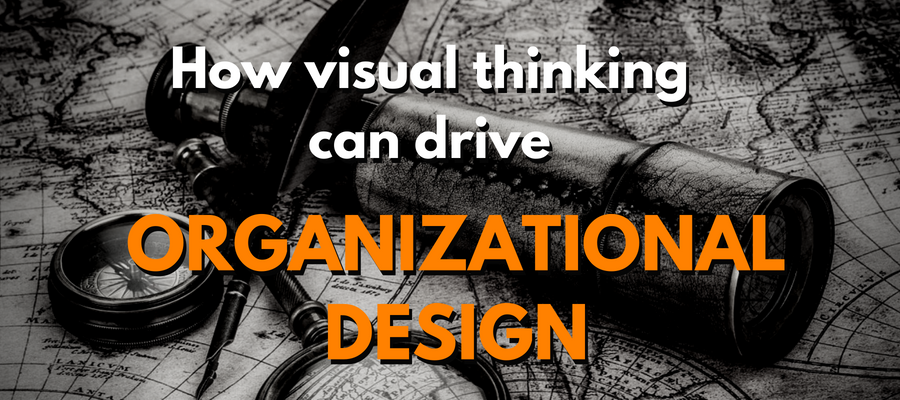Organizational design is hard work. It touches on numerous hot buttons that make people nervous – especially the nebulous idea of change. Change must be bad, right? The ThoughtForm Blog recently took a closer look at how visual thinking can serve as a very effective driver of organizational design. In the process, it illuminated some key benefits of mind mapping and business planning with teams.
Better Ideas, Faster: The Role of Visual Thinking in Internal Consulting views the challenge of organizational design from the standpoint of an internal consultant – an innovation manager whose job it is to mobilize the firm to move in a new direction.
It divides the project of OD into 5 steps:
- The team kickoff
- Team alignment
- Leadership review
- Client orientation
- Project session
At each step, the author highlights the roles that visual thinking plays. I summarized those in a mind map (below – click on the image to view it in a larger size!).
I’m not going to dig into all of them, but did want to draw your attention to six of them. These are especially important, but aren’t discussed much in the context of mind mapping:
Spot the differences in vocabulary and arrive at common language: The words we use to describe an object or a situation heavily shape our experience of it. That’s why our words and perceptions MUST be surfaced up front, so we can reach consensus on the current challenge and the desired future state. The associative nature of a mind map is a perfect place to explore your situation and the words your team is using to describe it – and arrive at a shared vision of the ideal future state, described with a common vocabulary.
Discover gaps and inconsistencies that can be corrected: Mind maps enable us to make our thinking tangible and to build a shared picture of the current situation. By displaying your information in a visual, hierarchical form, mind maps make it much easier to see what pieces are missing.
Align the team to a shared vision of goals, outputs and roles: One of the challenges of large businesses today is that they are running so lean and the positions people have are so specialized that no one has the complete picture. Creating a visual map of how all the pieces fit together helps everyone arrive at a shared vision of what the challenges are, the objectives for change and the plan to get there.
In many cases, there are so many moving parts that visual planning may be the only way to achieve consensus and the complete picture of the business.
Make the future state tangible: Most people are notoriously bad at being able to envision and articulate the future. By clearly depicting the current state and the journey needed to get there, visual thinking empowers team members.
Enable staff to envision their roles: Traditional planning uses flip charts and white boards to capture ideas, information and knowledge. But once it’s placed in a specific position on these physical canvases, it’s stuck there. That’s why structure of the plan becomes obscured in a morass of notes, diagrams and drawings. This makes it hard for individuals to see how their role fits into the larger whole. Creating a visual representation of the plan brings clarity not only to the overall goals and objectives, but to how each person will contribute to a successful outcome.
Empower teams to co-create the outcomes they want: Many workers today feel about change the way the kid does at the end of a game of “crack the whip.” In this playground game, all of the players hold hands in a line. The person at one end of the line runs around, changing directions quickly. The tail of the “whip” of players tends to get moved around with a lot more force than players closer to the front.
Most workers are trying to hold on for dear life because of decisions that others made are affecting their livelihood. In short, they feel like victims of unseen forces. Projecting a mind map or a visual diagram at the front of a conference room enables participants to feel like they are co-creating their future. This makes them feel less like victims and more like masters of their own destiny. Even if they don’t get everything they want in this planning process, they have had their say. And that is still empowering.
Which of these visual thinking benefits resonates with YOU? Share your thoughts in the comments below.



Leave a Reply